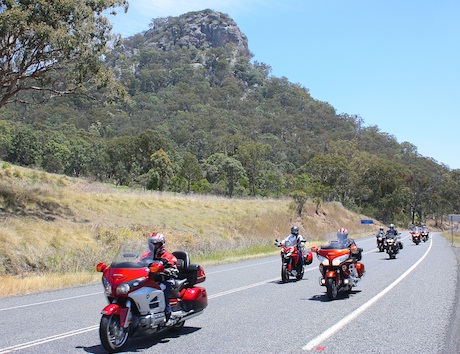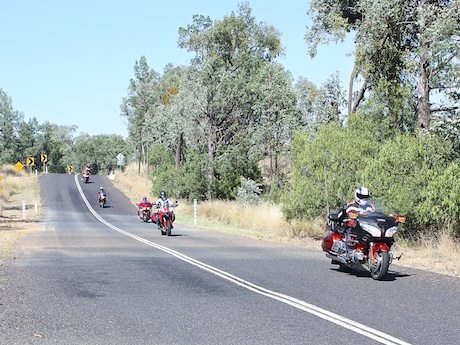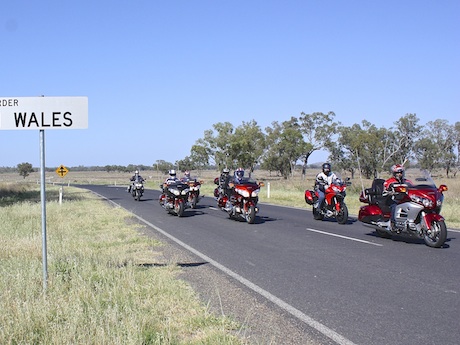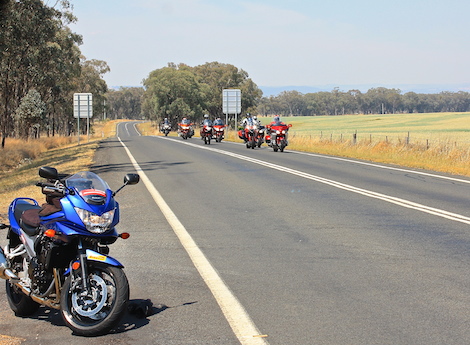Group riding gives you a great feeling of camaraderie. I once rode with hundreds of other riders from Brisbane all the way to the Gold Coast in a twilight run for the Morgan & Wacker 95th anniversary. What a feeling as we roared through town, thundering our Harleys up the concrete avenues.
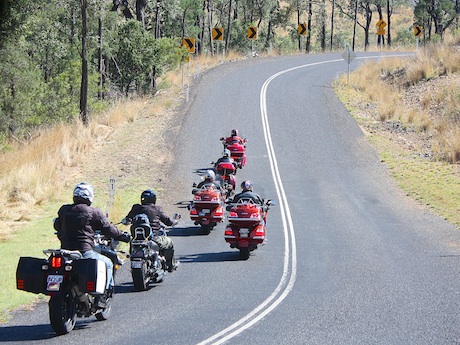
Group riding takes a lot of organising and, surprisingly, a lot of talent to ride in a big group. Hunter S. Thompson was particularly impressed with the ability of the Hells Angels to ride fast in tight groups. He points out that they not only have to be talented riders, but they also have to place implicit trust in their comrades’ abilities.
If you love group riding, here are 10 tips to make your next group ride of 10 or more bikes a little less dangerous and better organised.
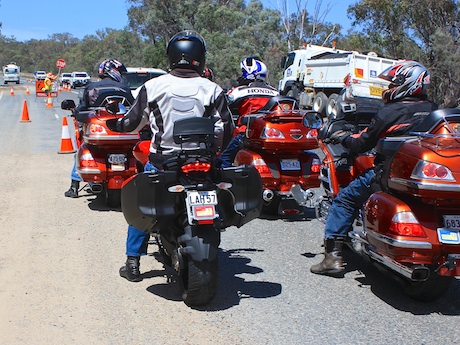
- Appoint a ride captain. Call them whatever you want, but you need someone to make decisions on where and when you are going. It’s not just to avoid arguments or to have someone to blame if it all goes wrong, but you need someone to assume the role of organiser. They don’t have to lead or set the pace – you can appoint another person for that role. But they have to advise everyone of the next stop, alert people when you are about to leave and ensure that stops take into account the need for food, drinks and toilet stops. There is openly one rule about the ride leader – no one should ever pass them.
- Also appoint a tail-end Charlie. It’s a thankless job, but there is usually someone willing to volunteer. It ensures that you haven’t lost anyone from the ride or that someone hasn’t crashed. Unless it’s a really large ride contingent, record everyone’s mobile phone number so you can work out if someone has just split from the pack to go home early. Otherwise, you will be waiting around all day for someone who may not turn up.
- Try to assemble a group of like-minded riders with similar riding abilities and relatively similar bike capabilities. Don’t mix cruisers with cafe racers or adventure bikes with sports bikes. They will want to go different places, at different rates and with different fuel range. Remember, your whole group only progresses at the pace of the slowest rider.
- Dispense with the corner-man system. It’s unfair as fast riders work their way up to the second position only to end up down the back again. Then they attempt to pass everyone again which is dangerous. On big rides when people get strung out, they can be sitting at a corner for ages. The system almost always fails and you never know who to blame for someone getting lost. Instead, advise everyone of the route and destination. If they miss a turn, then they should have a GPS or phone to find their way home or to the final destination. If you must use a corner-man system try the one where each rider doesn’t turn a corner until they can see the rider behind them.
- Although it’s legal, don’t ride side by side. If a rider has to take evasive action, they will take out another rider. Keep a safe distance from each other. Staggered formation (riders in alternate wheel tracks) is better than single-file at slow speeds as the ride doesn’t string out as far and people don’t get left behind. It also provides more braking distance between riders. However, it can also lead to riders bunching up. The faster you are going, the more space you need between each other. Once over 80km/h, go back to single file.
- If the ride gets strung out, don’t panic, try to catch up or slow the ride to pick up the stragglers. If everyone has been briefed, they will all end up at the next stop, anyway. Unnecessarily changing the pace and flow of a ride can cause dangerous bunching. A strong-out ride is safer than a tight group, anyway.
- When you ride solo, you ride for yourself. When riding in a group, you have to watch out for other people. “Over-indicate” turns and stops. For example, don’t just put your blinker on, maybe give a hand signal as well, or tap the brake several times to flash your lights. Never just use engine braking into a corner as it gives the following rider no indication you are slowing down.
- Look around you. Don’t concentrate on the rear tyre of the bike in front. Look ahead several riders and also check your mirrors more frequently. This will give you more spatial awareness so you can identify a problem in the pack earlier and therefore be able to react quickly.
- Cornering is particularly difficult in a group as you tend to tip in when the rider in front starts tipping in. That means you will turn in too early and run wide out of the corner. Instead, watch where the rider in front tips in, identify that point in the road and don’t starting your turn until you reach it.
- If you are faster than the rider in front, pass them, unless it’s the ride leader. Don’t sit right on their tail, intimidating them. But only pass one rider at a time and maybe give them a short blast of the horn first to alert them of your intentions. When you pass, make sure you have plenty of room to pull back into the pack. If you pass a car, always assume the rider behind you will also try to overtake. So when you file back into the lane, move to the left wheel track to allow room for another rider to join you.
- Never ride behind someone on an old or classic bike. They tend to break down, they don’t stop very well and they can drop oil.
What tips do you have for group riding? Leave your comments below.


